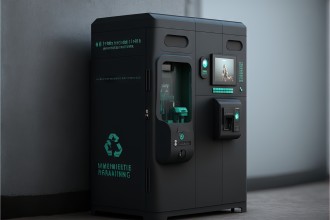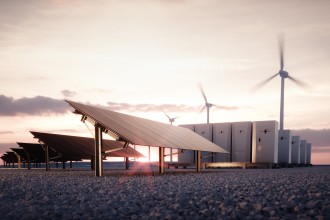Pre-Combustion Capture
Pre-combustion capture is a carbon capture technology that is commonly used in the power generation industry. It involves converting fossil fuels into a gas before combustion, which is then processed to remove carbon dioxide. This technology is particularly useful for power plants that use gasification technology to convert coal into a gas before combustion. Pre-combustion capture can reduce carbon dioxide emissions from power plants by up to 90%.
Oxyfuel Combustion Capture
Oxyfuel combustion capture is a carbon capture technology that is commonly used in the power generation industry. It involves burning fossil fuels in a mixture of oxygen and recycled flue gases, which creates a concentrated stream of carbon dioxide that can be captured and stored. This technology is particularly useful for power plants that use traditional combustion technology and can also reduce carbon dioxide emissions up to 90%.
Direct Air Capture
Direct air capture is a carbon capture technology that is used in a variety of industries, including chemical production and steel manufacturing. It involves capturing carbon dioxide directly from the air, rather than from industrial processes. Direct air capture is particularly useful for industries that have a difficult time reducing their carbon dioxide emissions through traditional carbon capture technologies.

Carbon Capture in Cement Manufacturing
The cement manufacturing industry is a significant source of carbon dioxide emissions, accounting for approximately 7% of global emissions. One carbon capture technology that can be used in cement manufacturing is the Calcium Looping Process. This process involves adding calcium oxide to the cement kiln, which reacts with the carbon dioxide emissions to produce calcium carbonate. The calcium carbonate can then be separated and stored, resulting in a reduction of carbon dioxide emissions.
Carbon Capture in Natural Gas Processing
Natural gas processing is another industry that can benefit from carbon capture technologies. One technology that is commonly used in natural gas processing is the Membrane-based Carbon Capture technology. This process involves separating carbon dioxide from natural gas using a membrane that only allows carbon dioxide molecules to pass through, while the other gases are left behind. The carbon dioxide is then compressed and stored, resulting in a significant reduction of carbon dioxide emissions.
To Conclude
In conclusion, carbon capture technologies have the potential to play a significant role in reducing greenhouse gas emissions and combatting climate change. There are several different use cases for these technologies, including pre-combustion capture, post-combustion capture, direct air capture, carbon capture in cement manufacturing, and carbon capture in natural gas processing. As industries continue to seek solutions to reduce their carbon footprint, carbon capture technologies will likely play an increasingly important role in the fight against climate change.
Quickscout
Looking for suitable
technology providers?
Start scouting!







